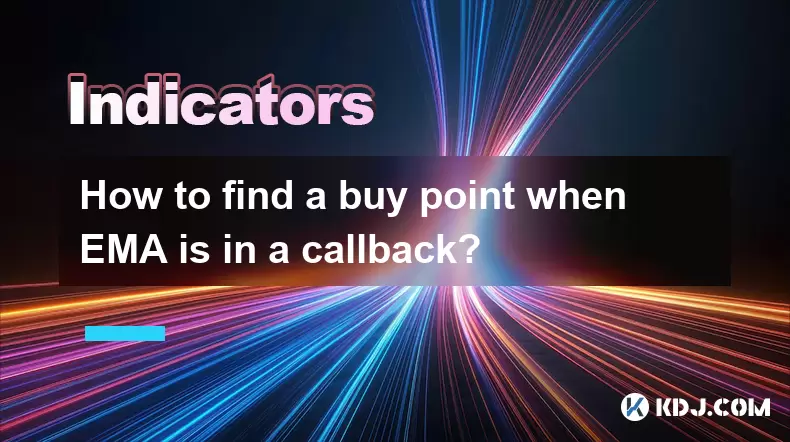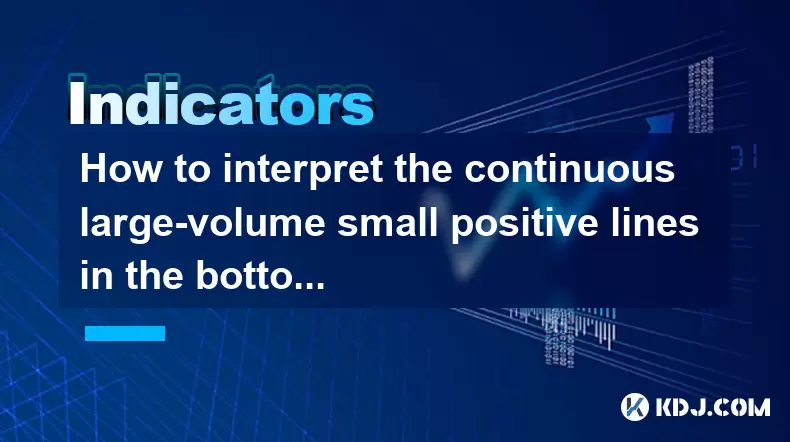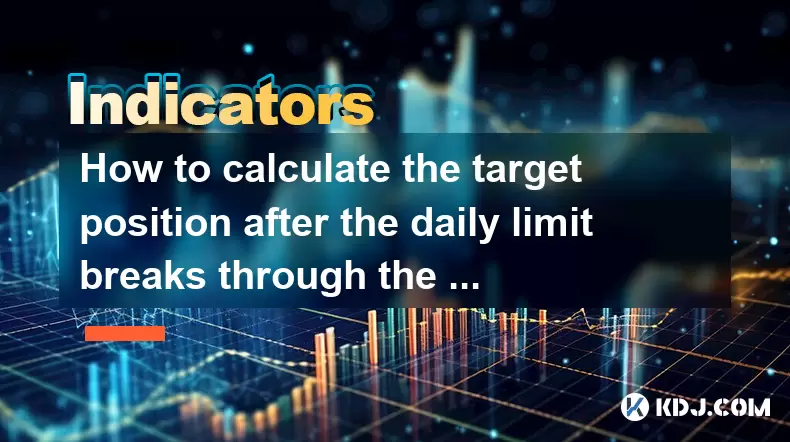-
 Bitcoin
Bitcoin $101,898.5005
-0.75% -
 Ethereum
Ethereum $2,258.1125
-1.07% -
 Tether USDt
Tether USDt $1.0004
0.01% -
 XRP
XRP $2.0178
-2.93% -
 BNB
BNB $624.0243
-1.53% -
 Solana
Solana $134.3298
-0.90% -
 USDC
USDC $0.9999
0.01% -
 TRON
TRON $0.2675
-2.05% -
 Dogecoin
Dogecoin $0.1538
-1.96% -
 Cardano
Cardano $0.5482
-1.11% -
 Hyperliquid
Hyperliquid $35.5636
5.45% -
 Bitcoin Cash
Bitcoin Cash $453.4902
-1.66% -
 Sui
Sui $2.5134
-2.97% -
 UNUS SED LEO
UNUS SED LEO $9.1292
1.77% -
 Chainlink
Chainlink $11.8457
-1.60% -
 Stellar
Stellar $0.2312
-2.73% -
 Avalanche
Avalanche $16.9721
0.29% -
 Toncoin
Toncoin $2.7549
-3.82% -
 Shiba Inu
Shiba Inu $0.0...01081
-1.10% -
 Litecoin
Litecoin $80.8250
-0.71% -
 Hedera
Hedera $0.1374
0.21% -
 Monero
Monero $305.4827
-2.36% -
 Ethena USDe
Ethena USDe $1.0006
0.00% -
 Dai
Dai $1.0000
-0.01% -
 Polkadot
Polkadot $3.2085
-3.12% -
 Bitget Token
Bitget Token $4.0845
-3.13% -
 Uniswap
Uniswap $6.3353
-1.63% -
 Pi
Pi $0.5085
-0.70% -
 Pepe
Pepe $0.0...08913
-3.82% -
 Aave
Aave $232.7090
-0.58%
How to find a buy point when EMA is in a callback?
Use EMA callbacks to find crypto buy points: monitor price action, confirm trends, and set strategic entry points for informed trading decisions.
May 24, 2025 at 08:00 am

When trading cryptocurrencies, identifying the right moment to buy can significantly impact your investment's success. One popular technical analysis tool traders use is the Exponential Moving Average (EMA). Finding a buy point when the EMA is in a callback involves understanding the dynamics of the EMA, recognizing the callback, and applying strategic entry points. This article will guide you through the process step-by-step, ensuring you have a solid foundation to make informed trading decisions.
Understanding the Exponential Moving Average (EMA)
The Exponential Moving Average (EMA) is a type of moving average that places more weight on recent prices, making it more responsive to new information than a simple moving average. The EMA is calculated using a formula that gives more importance to the most recent data points, which helps traders identify trends more quickly. The formula for the EMA is as follows:
[ \text{EMA}{\text{today}} = (\text{Price}{\text{today}} \times \text{Multiplier}) + (\text{EMA}_{\text{yesterday}} \times (1 - \text{Multiplier})) ]
Where the Multiplier is calculated as:
[ \text{Multiplier} = \frac{2}{(\text{Time period} + 1)} ]
Commonly used time periods for EMA in cryptocurrency trading include the 9-day, 21-day, and 50-day EMAs.
Identifying an EMA Callback
An EMA callback occurs when the price of a cryptocurrency temporarily moves away from the EMA and then returns to it. This movement can indicate a potential buying opportunity if the overall trend remains bullish. To identify an EMA callback, you need to:
- Monitor the price action: Watch for the price to deviate from the EMA, typically moving below it in an uptrend.
- Observe the trend: Ensure that the long-term trend remains upward. This can be confirmed by looking at higher time frame charts.
- Check for support levels: Look for historical price levels where the cryptocurrency has found support during previous callbacks.
Setting Up Your Trading Chart
To effectively find a buy point when the EMA is in a callback, you need to set up your trading chart correctly. Here’s how to do it:
- Choose a reliable charting platform: Platforms like TradingView, Binance, or Coinbase Pro offer robust charting tools.
- Add the EMA indicators: Select the desired time periods for your EMAs (e.g., 9-day, 21-day, 50-day) and add them to your chart.
- Adjust the time frame: Depending on your trading style, choose an appropriate time frame (e.g., 1-hour, 4-hour, daily).
- Include additional indicators: Consider adding other indicators like the Relative Strength Index (RSI) or Moving Average Convergence Divergence (MACD) to confirm your analysis.
Identifying the Buy Point
Once you have identified an EMA callback and set up your chart, the next step is to pinpoint the exact buy point. Here are the key factors to consider:
- Price touching the EMA: A common buy signal is when the price touches or comes very close to the EMA after a callback. This indicates that the price is returning to the trend line.
- Confirmation from other indicators: Use additional indicators like the RSI to confirm that the market is not overbought. An RSI below 70 can suggest that the asset is not yet overvalued.
- Volume analysis: Look for an increase in trading volume as the price approaches the EMA. Higher volume can indicate stronger buying interest and confirm the buy signal.
- Candlestick patterns: Pay attention to bullish candlestick patterns such as the hammer or engulfing pattern, which can signal a potential reversal and buying opportunity.
Executing the Trade
Once you have identified the buy point, it’s crucial to execute the trade efficiently. Here are the steps to follow:
- Set your entry price: Based on your analysis, determine the exact price at which you will enter the trade. This could be when the price touches the EMA or when a bullish candlestick pattern forms.
- Place your order: Use a limit order to buy the cryptocurrency at your predetermined entry price. This ensures that you enter the trade at the desired level.
- Set a stop-loss: To manage risk, set a stop-loss order below the recent low or a significant support level. This will limit your potential losses if the trade goes against you.
- Monitor the trade: Keep an eye on the price action and adjust your stop-loss or take-profit levels as needed. Consider using trailing stops to lock in profits as the price moves in your favor.
FAQs
Q: How can I determine the best time period for the EMA in my trading strategy?
A: The best time period for the EMA depends on your trading style and the specific cryptocurrency you are trading. For short-term traders, a 9-day or 21-day EMA might be more suitable, as it reacts quickly to price changes. Long-term traders might prefer a 50-day or 200-day EMA for a broader view of the trend. Experiment with different time periods and backtest your strategy to find what works best for you.
Q: What should I do if the price continues to fall after touching the EMA?
A: If the price continues to fall after touching the EMA, it could indicate a false signal or a change in the trend. In such cases, it’s important to adhere to your stop-loss order to limit your losses. Additionally, reassess the overall market conditions and consider waiting for another buy signal or adjusting your strategy.
Q: Can I use multiple EMAs to find a buy point during a callback?
A: Yes, using multiple EMAs can provide a more comprehensive view of the market. For example, you might use a shorter-term EMA (like the 9-day) to identify quick entry points and a longer-term EMA (like the 50-day) to confirm the overall trend. When the shorter-term EMA crosses above the longer-term EMA after a callback, it can be a strong buy signal.
Q: How important is volume in confirming a buy point during an EMA callback?
A: Volume is crucial in confirming a buy point during an EMA callback. An increase in volume as the price approaches the EMA suggests strong buying interest and can validate the buy signal. Conversely, low volume might indicate weak market participation, making the buy signal less reliable. Always consider volume alongside other indicators for a more robust analysis.
Disclaimer:info@kdj.com
The information provided is not trading advice. kdj.com does not assume any responsibility for any investments made based on the information provided in this article. Cryptocurrencies are highly volatile and it is highly recommended that you invest with caution after thorough research!
If you believe that the content used on this website infringes your copyright, please contact us immediately (info@kdj.com) and we will delete it promptly.
- XRP Rally Meets Neo Pepe Presale: A Meme Coin Revolution?
- 2025-06-23 17:05:13
- Coin-Op Comeback: Arcade Bars, Stern, and a Director's New Venture
- 2025-06-23 16:45:12
- XRP in Japan: From Community Day Tacos to Payment Sector Transformation
- 2025-06-23 17:05:13
- LILPEPE Presale Frenzy: The Meme Coin Revolution is Here, Ya'll!
- 2025-06-23 16:45:12
- Bitcoin Crash Incoming? Kiyosaki Bets Big on Silver Amidst Global Uncertainty
- 2025-06-23 17:25:11
- Dogecoin, Meme Coins, Price Prediction: Riding the Bullish Wave?
- 2025-06-23 17:25:11
Related knowledge

Is the high opening and low closing and huge volume the next day a trap for more?
Jun 23,2025 at 05:07pm
Understanding High Opening and Low Closing with Huge VolumeWhen traders observe a high opening followed by a low closing and massive volume the next day, it often raises concerns about whether this is a trap set by larger players in the market. This pattern typically indicates strong volatility within a short period, which can confuse retail investors. ...

How to interpret the MACD's second golden cross on the water but insufficient volume?
Jun 23,2025 at 05:01pm
Understanding the MACD Indicator and Its SignificanceThe Moving Average Convergence Divergence (MACD) is a widely used technical analysis tool in cryptocurrency trading. It helps traders identify potential buy or sell signals by showing the relationship between two moving averages of an asset’s price. The MACD line, signal line, and histogram are the th...

How much volume is required for the W-bottom to break through the neckline of the time-sharing chart?
Jun 23,2025 at 04:21pm
Understanding the W-Bottom Pattern in Cryptocurrency TradingThe W-bottom pattern is a popular technical analysis formation used by traders to identify potential bullish reversals. It typically appears at the end of a downtrend and resembles the letter 'W' on price charts. In the context of cryptocurrency trading, where volatility is high and trends shif...

How to interpret the continuous large-volume small positive lines in the bottom area?
Jun 23,2025 at 04:43pm
Understanding the Basics of 'Large-Volume Small Positive Lines'In technical analysis, especially within the cryptocurrency market, the pattern known as 'large-volume small positive lines' refers to a scenario where the price increases slightly (small positive candlestick) but is accompanied by unusually high trading volume. This phenomenon typically occ...

How to read the sideways consolidation after the bottom volume and long positive line?
Jun 23,2025 at 02:28pm
Understanding the Sideways ConsolidationWhen analyzing cryptocurrency charts, sidewards consolidation refers to a phase where prices move within a narrow range without a clear upward or downward trend. This pattern often appears after significant price movements, such as a sharp increase followed by a period of equilibrium between buyers and sellers. In...

How to calculate the target position after the daily limit breaks through the previous high?
Jun 23,2025 at 02:57pm
Understanding the Daily Limit BreakthroughIn cryptocurrency trading, a daily limit typically refers to the maximum price movement allowed within a single trading day on certain exchanges. When this limit is breached, especially when it surpasses the previous high, traders often seek to calculate the target position or expected price movement following s...

Is the high opening and low closing and huge volume the next day a trap for more?
Jun 23,2025 at 05:07pm
Understanding High Opening and Low Closing with Huge VolumeWhen traders observe a high opening followed by a low closing and massive volume the next day, it often raises concerns about whether this is a trap set by larger players in the market. This pattern typically indicates strong volatility within a short period, which can confuse retail investors. ...

How to interpret the MACD's second golden cross on the water but insufficient volume?
Jun 23,2025 at 05:01pm
Understanding the MACD Indicator and Its SignificanceThe Moving Average Convergence Divergence (MACD) is a widely used technical analysis tool in cryptocurrency trading. It helps traders identify potential buy or sell signals by showing the relationship between two moving averages of an asset’s price. The MACD line, signal line, and histogram are the th...

How much volume is required for the W-bottom to break through the neckline of the time-sharing chart?
Jun 23,2025 at 04:21pm
Understanding the W-Bottom Pattern in Cryptocurrency TradingThe W-bottom pattern is a popular technical analysis formation used by traders to identify potential bullish reversals. It typically appears at the end of a downtrend and resembles the letter 'W' on price charts. In the context of cryptocurrency trading, where volatility is high and trends shif...

How to interpret the continuous large-volume small positive lines in the bottom area?
Jun 23,2025 at 04:43pm
Understanding the Basics of 'Large-Volume Small Positive Lines'In technical analysis, especially within the cryptocurrency market, the pattern known as 'large-volume small positive lines' refers to a scenario where the price increases slightly (small positive candlestick) but is accompanied by unusually high trading volume. This phenomenon typically occ...

How to read the sideways consolidation after the bottom volume and long positive line?
Jun 23,2025 at 02:28pm
Understanding the Sideways ConsolidationWhen analyzing cryptocurrency charts, sidewards consolidation refers to a phase where prices move within a narrow range without a clear upward or downward trend. This pattern often appears after significant price movements, such as a sharp increase followed by a period of equilibrium between buyers and sellers. In...

How to calculate the target position after the daily limit breaks through the previous high?
Jun 23,2025 at 02:57pm
Understanding the Daily Limit BreakthroughIn cryptocurrency trading, a daily limit typically refers to the maximum price movement allowed within a single trading day on certain exchanges. When this limit is breached, especially when it surpasses the previous high, traders often seek to calculate the target position or expected price movement following s...
See all articles
























































































